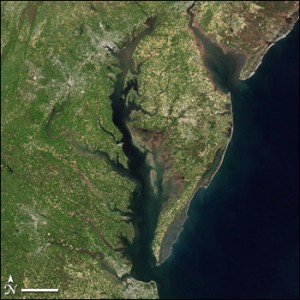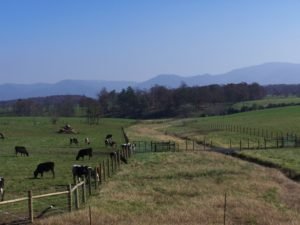The Chesapeake Bay Foundation (CBF), the Bay states, the District of Columbia, federal agencies and thousands of volunteers including teachers and farmers have
been working to restore the Chesapeake Bay since the passage of the Clean Water Act in 1972. There are many successes. For example many of the localities in the watershed have the best wastewater treatment in the world. In addition, agriculture is halfway to achieving its nutrient reduction goals, phosphorous has been banned in laundry detergent, and Virginia recently banned phosphorous in maintenance fertilizer for lawns.
We are moving forward. In 2010, the Environmental Protection Agency (EPA) developed pollution loads for nitrogen, phosphorous, and sediment for the Bay jurisdictions (known as the Chesapeake Bay TMDL). Last year, EPA approved plans to restore the Bay developed by each of the Bay states and the District of Columbia. These plans are known as Watershed Implementation Plans (WIPs). Collectively the TMDL and WIPS are called the “Chesapeake Clean Water Blueprint“. CBF believes that this “Blueprint” is the best hope for reducing pollutants entering the Bay to levels scientists believe will restore the Bay to the thriving ecosystem so many communities rely on.
A restored Bay will bring economic growth to the entire watershed. There will be
greater harvests for the watermen, healthier recreation, increased tourism and more jobs. If the Bay is restored, the farms and communities upstream will be restored and healthier as well because what happens to water upstream profoundly affects the Bay. It’s a win-win situation for everyone.
Oh, wait a minute…just when we thought everyone in the watershed was in agreement, deep pocketed lobbyists from outside the watershed brought a lawsuit against the EPA for “overstepping their bounds,” “not having enough time for public input,” and “using flawed science” to determine pollution limits over the Chesapeake Bay watershed.
The American Farm Bureau Federation along with the Fertilizer Institute, the American Home Builders Association and other Big Ag lobbying groups argued their suit against the EPA in federal court on October 4th. None of the Bay states joined their suit.
During the hearing, the Farm Bureau’s lawyer stood before Judge Sylvia Rambo and said, “If they can do it here, they can do it anywhere, on any scale”.
Is there any doubt why they don’t want “it” done for the Chesapeake Bay?
The Chesapeake Bay Foundation stood alongside the EPA before the judge defending the plans that were developed by each state and approved by the EPA.
Let’s do some fact checking.
“Overstepping their bounds”, let’s see…beginning in 1983 governors in the Bay states agreed to reduce pollution to the Bay. In 1987 they agreed to reduce pollution by 40%. This goal was not met so they agreed to meet that goal by 2000. When that goal was not met they agreed to meet it by 2010. They didn’t meet that one either. Frustrated by not reaching the goals, all the governors of the Bay states agreed that EPA should assign them pollution reduction targets that they would have to meet by developing their own “Watershed Improvement Plans”.
Is it overstepping for EPA finally to insist that the Clean Water Act applies to the Chesapeake Bay?
“Not having enough time to comment”? The EPA and the states held numerous hearings and meetings all open to the public for years prior to the finalization of the Blueprint. The public, including the Farm Bureau and the Home Builders, submitted hundreds of pages of comments on the draft Blueprint and EPA responded to each of them.
“Flawed science”? For a multi-state, multi-jurisdictional watershed with thousands of streams, scientists believe this is the best model the world has ever known. Scientists continually adapt the model as new data becomes available. Furthermore; each of the “dirty water” streams leading into the Bay has been listed on the “dirty waters list” because of empirical water quality assessment data — not a model.
Will Baker; the president of the Chesapeake Bay Foundation sent a letter to his members on the day of the hearing. In it he stated:
“These (pollution) limits, virtually the same as those set (and missed!) 25 years ago, are our last and best chance to leave a legacy of clean water for future generations. So today, CBF will be standing up for all of us who believe clean water is a fundamental right, taking on the opposition, and defending the Clean Water Blueprint to save the Bay”.
Judge Rambo is expected to make a ruling in the coming months.
If we can restore the Chesapeake Bay, the world will have a sterling example of how multiple jurisdictions, farmers, watermen and city dwellers can all work together for healthier and more prosperous communities.
The Chesapeake Clean Water Blueprint is our path for a restored Bay and a restored watershed.





9 Comments
Leave your reply.